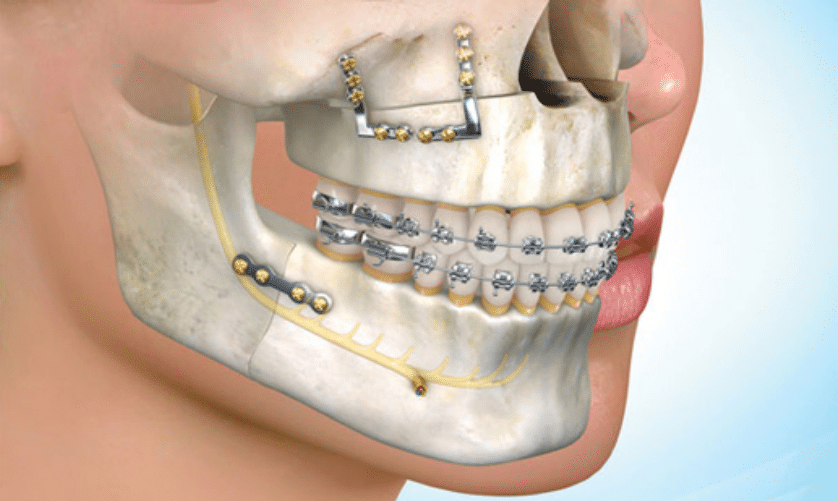In the ever-evolving field of medical advancements, maxillofacial surgery continues to push boundaries and embrace cutting-edge techniques. From reconstructing facial features to treating complex oral and dental conditions, this specialized branch of surgery plays a vital role in enhancing both form and function.
In this article, we delve into the latest trends in maxillofacial surgery, shedding light on the innovative approaches that are transforming patient outcomes. From the incorporation of virtual reality and 3D printing in surgical planning to the use of robotics and navigation systems in the operating room, the field is witnessing a revolution in how procedures are performed.
We explore the potential of minimally invasive techniques, such as endoscopic and laser-assisted surgeries, which not only minimize scarring but also ensure faster recovery times. Additionally, we examine the integration of regenerative medicine and stem cell therapies in maxillofacial surgery, offering patients new avenues for regaining functional and esthetic normalcy.
Join us as we delve into these groundbreaking trends in maxillofacial surgery and discover the future of this dynamic field.
Evolution of maxillofacial surgery techniques
Maxillofacial surgery has come a long way since its inception. Over the years, advancements in technology and surgical techniques have revolutionized the field, allowing surgeons to achieve more precise and effective results. Traditional approaches, such as open surgeries, have given way to minimally invasive techniques that offer numerous benefits to patients.
One notable evolution in maxillofacial surgery techniques is the incorporation of endoscopic procedures. By utilizing small incisions and a camera-guided system, surgeons can access and treat the affected area with minimal disruption to surrounding tissues. This approach not only reduces scarring but also leads to faster recovery times for patients. Additionally, laser-assisted surgeries have gained popularity in recent years, offering a precise and efficient method for soft tissue procedures.
Another significant advancement in maxillofacial surgery is the integration of regenerative medicine and stem cell therapies. These innovative approaches aim to restore function and esthetic normalcy by harnessing the body’s natural ability to heal and regenerate. Through the use of growth factors, stem cells, and tissue engineering techniques, surgeons can promote the regeneration of damaged tissues and enhance the overall outcomes of maxillofacial procedures.
Recent advancements in maxillofacial surgery
The field of maxillofacial surgery is constantly evolving, with new advancements and techniques emerging regularly. One area that has seen significant progress is the use of virtual reality (VR) in surgical planning. VR technology allows surgeons to visualize the patient’s anatomy in a three-dimensional environment, enabling them to better understand complex anatomical structures and plan procedures with unparalleled precision. By using VR, surgeons can simulate surgical scenarios, identify potential challenges, and optimize their surgical approach before stepping into the operating room.
Another exciting development in maxillofacial surgery is the integration of robotics and navigation systems. These technologies provide surgeons with enhanced accuracy and control during procedures, particularly in complex cases. Robots can assist in tasks such as bone cutting, implant placement, and tissue suturing, improving surgical outcomes and reducing the risk of complications. Navigation systems, on the other hand, allow surgeons to track their instruments in real-time and precisely navigate the surgical field, leading to more precise and efficient surgeries.
The use of virtual reality in maxillofacial surgery
Virtual reality (VR) has revolutionized the way surgeons plan and execute maxillofacial surgeries. By creating a virtual environment that replicates the patient’s anatomy, surgeons can gain a comprehensive understanding of the complex structures involved. This technology allows for precise surgical planning, reducing the risk of complications and ensuring optimal outcomes.
VR enables surgeons to practice complex procedures and simulate different scenarios before performing the actual surgery. By doing so, they can identify potential challenges, develop strategies to overcome them, and optimize their surgical approach. This not only enhances surgical precision but also increases patient safety.
Moreover, VR can aid in patient education and informed consent. By visualizing the surgical plan in a virtual environment, patients can better understand the procedure, its potential risks, and expected outcomes. This empowers patients to make informed decisions about their treatment and establishes a strong doctor-patient relationship based on trust and transparency.
In summary, the integration of virtual reality in maxillofacial surgery has transformed the field, allowing surgeons to plan and execute procedures with unparalleled accuracy. This technology has revolutionized surgical training, patient education, and surgical outcomes, making it an invaluable tool in the future of maxillofacial surgery.
Robotics in maxillofacial surgery
Robotics has increasingly found its place in the field of maxillofacial surgery, offering surgeons enhanced precision, control, and safety. Robots can perform a wide range of tasks, from assisting in bone cutting and implant placement to suturing delicate tissues. By leveraging robotic technology, surgeons can achieve more consistent results and reduce the risk of human error.
One of the key advantages of robotics in maxillofacial surgery is the ability to perform highly accurate procedures. Robots can execute movements with submillimeter precision, surpassing the capabilities of human hands. This level of precision is particularly crucial in delicate procedures where even a small deviation can have significant consequences.
Furthermore, robots can provide stability and steadiness during surgeries, minimizing the risk of unintended movements. This is especially beneficial in procedures that require a high degree of concentration and fine motor skills. By reducing the likelihood of human error, robots contribute to safer surgeries and improved patient outcomes.
Robotic technology also enables surgeons to overcome the limitations of human anatomy. With the use of robotic arms and instruments, surgeons can access hard-to-reach areas, navigate complex anatomical structures, and perform intricate procedures with greater ease. This opens up new possibilities for treating complex cases and expands the scope of what can be achieved in maxillofacial surgery.
In conclusion, the integration of robotics in maxillofacial surgery has revolutionized the field, offering surgeons enhanced precision, control, and safety. As technology continues to advance, we can expect robots to play an increasingly significant role in the future of maxillofacial surgery.
The role of artificial intelligence in maxillofacial surgery
Advancements in robotics have made a significant impact on the field of maxillofacial surgery. Surgeons now have access to robotic systems that assist in complex procedures, improving precision and reducing the risks associated with traditional surgical techniques. These robots can be used to perform delicate tasks, such as bone cutting and drilling, with enhanced control and accuracy.
One such example is the da Vinci Surgical System, which has been adapted for maxillofacial surgery. This robotic platform allows surgeons to manipulate instruments with enhanced dexterity through small incisions. The system’s high-definition 3D visualization provides a detailed view of the surgical site, enabling surgeons to navigate complex anatomical structures safely.
Robotic assistance in maxillofacial surgery also extends to the field of dental implantology. With the use of robotic arms, dental implants can be placed with unparalleled precision, resulting in improved implant success rates and reduced complications. The integration of robotics in maxillofacial surgery continues to evolve, promising even more advancements in the future.
Non-surgical alternatives in maxillofacial treatment
The advent of 3D printing technology has revolutionized various industries, and maxillofacial surgery is no exception. By utilizing 3D printing, surgeons can create patient-specific models and surgical guides, enhancing the accuracy and efficiency of procedures.
In the context of maxillofacial surgery, 3D printing allows for the creation of anatomically precise models, enabling surgeons to plan surgeries more effectively. These models can be used to simulate complex reconstructions, aiding in pre-operative assessments and enhancing surgical outcomes. Additionally, 3D-printed surgical guides provide surgeons with precise instructions, facilitating the placement of implants and ensuring optimal results.
The use of 3D printing has also extended to the production of patient-specific implants. By utilizing biocompatible materials, surgeons can create implants that perfectly fit the patient’s anatomy, resulting in improved functional and aesthetic outcomes. This personalized approach not only enhances patient satisfaction but also reduces the risk of complications.
Future trends in maxillofacial surgery
Artificial intelligence (AI) has emerged as a powerful tool in various fields, and its potential in maxillofacial surgery is becoming increasingly evident. AI algorithms can analyze vast amounts of patient data, aiding in the diagnosis and treatment planning process. By leveraging machine learning, AI can identify patterns and predict outcomes, assisting surgeons in making informed decisions.
One area where AI shows promise is in the detection and analysis of facial asymmetry and craniofacial anomalies. By training algorithms on large datasets, AI can accurately identify and quantify these conditions, enabling surgeons to plan interventions with greater precision. This technology also holds potential for virtual surgical simulations, allowing surgeons to test various strategies before performing actual procedures.
Furthermore, AI-powered navigation systems can provide real-time feedback during surgeries, alerting surgeons to potential errors or deviations from the planned trajectory. This enhances surgical safety and reduces the risk of complications. As AI continues to advance, its integration into maxillofacial surgery is poised to revolutionize the field further.
Conclusion
While surgical intervention is often necessary in maxillofacial cases, non-surgical alternatives are gaining traction as effective treatment options. These alternatives not only offer less invasive approaches but also provide patients with additional choices for managing their conditions.
One such alternative is the use of injectable fillers for facial rejuvenation and augmentation. These fillers can restore lost volume, smooth wrinkles, and enhance facial contours without the need for surgery. This approach is particularly appealing to patients seeking non-permanent solutions or those who prefer a gradual improvement.
Another non-surgical option gaining popularity is the use of orthodontic appliances for certain malocclusions and dental abnormalities. In cases where surgery may be deemed too invasive or risky, orthodontics can offer an effective means of correcting dental alignment and improving bite function.
Additionally, non-surgical treatments such as laser therapy and ultrasound have shown promise in managing various maxillofacial conditions, including temporomandibular joint disorders and facial pain. These therapies provide targeted relief and can be used as standalone treatments or in conjunction with surgical interventions.
The availability of non-surgical alternatives expands the range of treatment options for patients, allowing for personalized approaches tailored to their specific needs.






